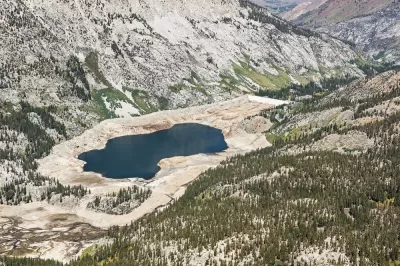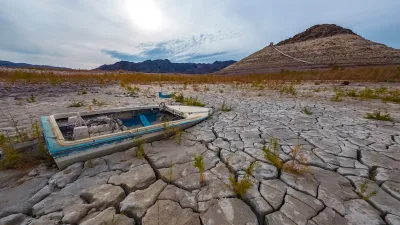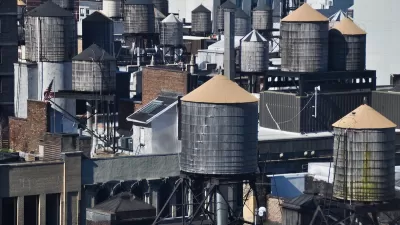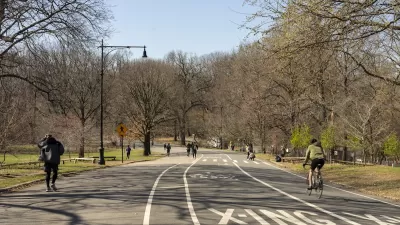Low rainfall and unusually high temperatures are contributing to worsening drought conditions in more than half of the continental United States.

According to the National Oceanic and Atmospheric Administration, drought conditions throughout more than half of the continental United States will persist this year, reports Maggie Astor.
Nearly 60 percent of the continental United States is experiencing drought, which is the largest part since 2013, NOAA said in issuing its spring outlook, a broad climatic forecast for April, May and June. While these conditions are not new, the agency expects them to worsen and spread in the coming months because of above-average temperatures and below-average precipitation.
Astor writes that California's Central Valley, which produces a quarter of the nation's food, will likely see the lowest three-year precipitation total in recorded history. "Lake Powell, one of two huge reservoirs on the Colorado River, fell this week to its lowest level since it was created more than 50 years ago with the construction of Glen Canyon Dam," threatening to shut down hydropower production.
"All of this increases the risk of wildfires, which have become larger and more frequent in recent years. In the United States, a study published this week by researchers at the University of Colorado Boulder found that from 2005 to 2018, fires occurred twice as often in Western states and four times as often in Great Plains states compared with the previous two decades."
FULL STORY: Drought in U.S. Is Expected to Persist, and Spread, Through the Spring

Alabama: Trump Terminates Settlements for Black Communities Harmed By Raw Sewage
Trump deemed the landmark civil rights agreement “illegal DEI and environmental justice policy.”

Planetizen Federal Action Tracker
A weekly monitor of how Trump’s orders and actions are impacting planners and planning in America.

The 120 Year Old Tiny Home Villages That Sheltered San Francisco’s Earthquake Refugees
More than a century ago, San Francisco mobilized to house thousands of residents displaced by the 1906 earthquake. Could their strategy offer a model for the present?

LA’s Tree Emergency Goes Beyond Vandalism
After a vandal destroyed dozens of downtown LA trees, Mayor Karen Bass vowed to replace them. Days later, she slashed the city’s tree budget.

Sacramento Leads Nation With Bus-Mounted Bike Lane Enforcement Cameras
The city is the first to use its bus-mounted traffic enforcement system to cite drivers who park or drive in bike lanes.

Seattle Voters Approve Social Housing Referendum
Voters approved a corporate tax to fund the city’s housing authority despite an opposition campaign funded by Amazon and Microsoft.
Urban Design for Planners 1: Software Tools
This six-course series explores essential urban design concepts using open source software and equips planners with the tools they need to participate fully in the urban design process.
Planning for Universal Design
Learn the tools for implementing Universal Design in planning regulations.
Ada County Highway District
Clanton & Associates, Inc.
Jessamine County Fiscal Court
Institute for Housing and Urban Development Studies (IHS)
City of Grandview
Harvard GSD Executive Education
Toledo-Lucas County Plan Commissions
Salt Lake City
NYU Wagner Graduate School of Public Service





























